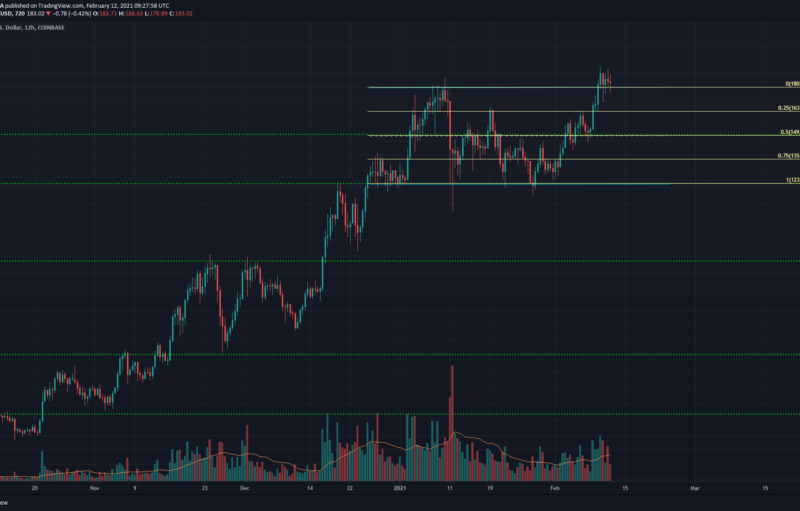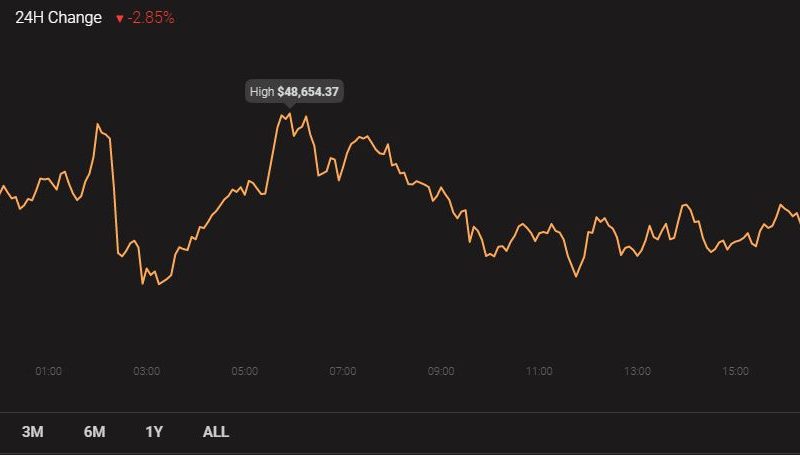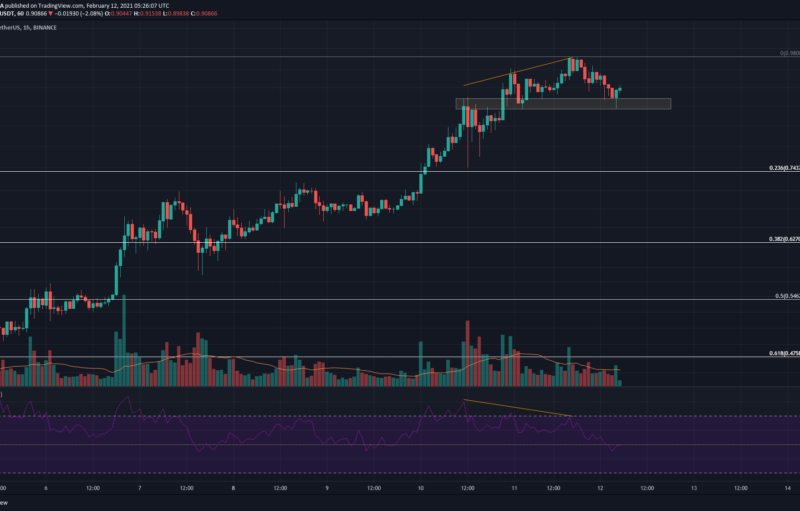As central bankers around the world get set for a prolonged period of monetary debasement, the 99% could look to Bitcoin for protection.
A Decade of Monetary Debasement Looms
The European Central Bank issued guidance at the end of last year that it would keep “the key ECB interest rates to remain at their present or lower levels until it has seen the inflation outlook robustly converge to a level sufficiently close to — but below — 2%.” The ECB cited weak, although stabilized, GDP growth in the Euro area of 0.2% quarter-on-quarter to justify its inflationary monetary stance.
President Trump has famously called for Federal Reserve Chairman Jerome Powell to weaken the dollar, with a tweet in July arguing that:
“China and Europe playing big currency manipulation game and pumping money into their system in order to compete with USA. We should MATCH, or continue being the dummies who sit back and politely watch as other countries continue to play their games — as they have for many years!”
Fed’s Efforts to Stoke a Flailing Economy
In the wake of the Global Financial Crisis of 2008, the Fed made five percentage points worth of interest rate cuts, to rates approaching zero. It embarked on a quantitative easing package to stimulate the economy, buying bonds among other means. Yet the recovery from recession was weak and drawn out.
Despite a stronger economy and near full employment levels, the Fed remains concerned about growth. Interest rates remain low, sitting now at 1.5 to 1.75%. In the event of an economic crisis, it has little wriggle room to stimulate activity.
From Roubini to the Gini
Nouriel Roubini infamously railed against cryptocurrency, with one of his more notorious accusations coming at the end of 2018. The economist argued that Bitcoin was less equitable than North Korea:
Decentralization in crypto is a myth. It is a system more centralized than North Korea: miners are centralized, exchanges are centralized, developers are centralized dictators (Buterin is “dictator for life” ) & the Gini inequality coefficient of bitcoin is worse than North Korea
— Nouriel Roubini (@Nouriel) October 8, 2018
The Gini coefficient is used to measure income, and sometimes wealth, inequality. Gini indexes range from a theoretical zero (0%) to one (100%), with more equitable countries achieving lower scores. According to the OECD, the United States had a Gini coefficient of 0.39 in 2017. It was 0.28 in Sweden and, in less equitable China, in 2011 it was over 0.5.
Courtesy Tamas Blummer, Medium, Bitcoin Gini coefficient
Bitcoin’s Gini coefficient reveals a highly inequitable distribution, ranging between 0.88 to 0.98 over most of its lifetime.
Applying these metrics to Bitcoin, however, is hardly fair. It is a nascent asset and is characterized by poor levels of penetration among the general public. A small number wallets hold billions of dollars worth of Bitcoin. The cryptocurrency’s lack of equitable spread is a product of the fact that there was a small number of early adopters.
Monetary Debasement the Real Threat to the Middle Class
With central banks determined to pursue accomodative monetary policy stances, the resultant debasement of fiat currency value and the inflation it is designed to cause is more harmful to those who can least afford it.
In a recent tweet from Tuur Demeester, two charts indicate a correlation between the Fed’s expansionary policies and inequality:
Monetary debasement significantly contributes to the wealth transfer from poor to rich. The rich have access to the money before it loses its purchasing power (via borrowing), and thus harvest wealth from the poor. As the money cheapened in the 90s, the wealth gap grew in tandem: pic.twitter.com/T9HxIHLP2k
— Tuur Demeester (@TuurDemeester) January 3, 2020
The first chart shows Federal Reserve interest rates over time:
Courtesy Tuur Demeester, Twitter
The second shows rising inequality in the US over time:
Courtesy Tuur Demeester, Twitter
There has been a clear correlation between monetary easing and rising inequality since the early nineties. If the trend continues, the second chart suggests the richest Americans will own a rising share of resources. The richest 0.1% already own as many assets as the bottom 90%.
Demeester argues that “Monetary debasement significantly contributes to the wealth transfer from poor to rich.” The reason is access. The rich have access to money to purchase assets. As money is debased over time, asset prices rise in nominal terms.
The less well-off are faced with rising asset prices and lagging income growth. Without the means to hold appreciating assets that protect the poor from rising prices, the gap between the rich and poor expands.
As central bankers look set to engage in a long-running currency war, a prolonged period of monetary debasement appears to be on the horizon. The poor will be the ultimate victims, with the wealth transfer from the have nots to the haves set to continue.
Bitcoin may become the hedge against risk many of its proponents have promoted it as. The digital gold narrative is not especially new. Grayscale’s high-profile #dropgold campaign called for the public to abandon gold and flock to Bitcoin.
No crypto asset has truly been tested as a safe-haven asset in either a recession or a period of monetary easing. It has, however, become a default investment in economies experiencing political turmoil or hyperinflation. It remains to be seen if a gentler and longer-term period of fiat debasement in the west will attract the interest of those for whom central bank accommodation is economically harmful.
The post appeared first on CryptoBriefing






